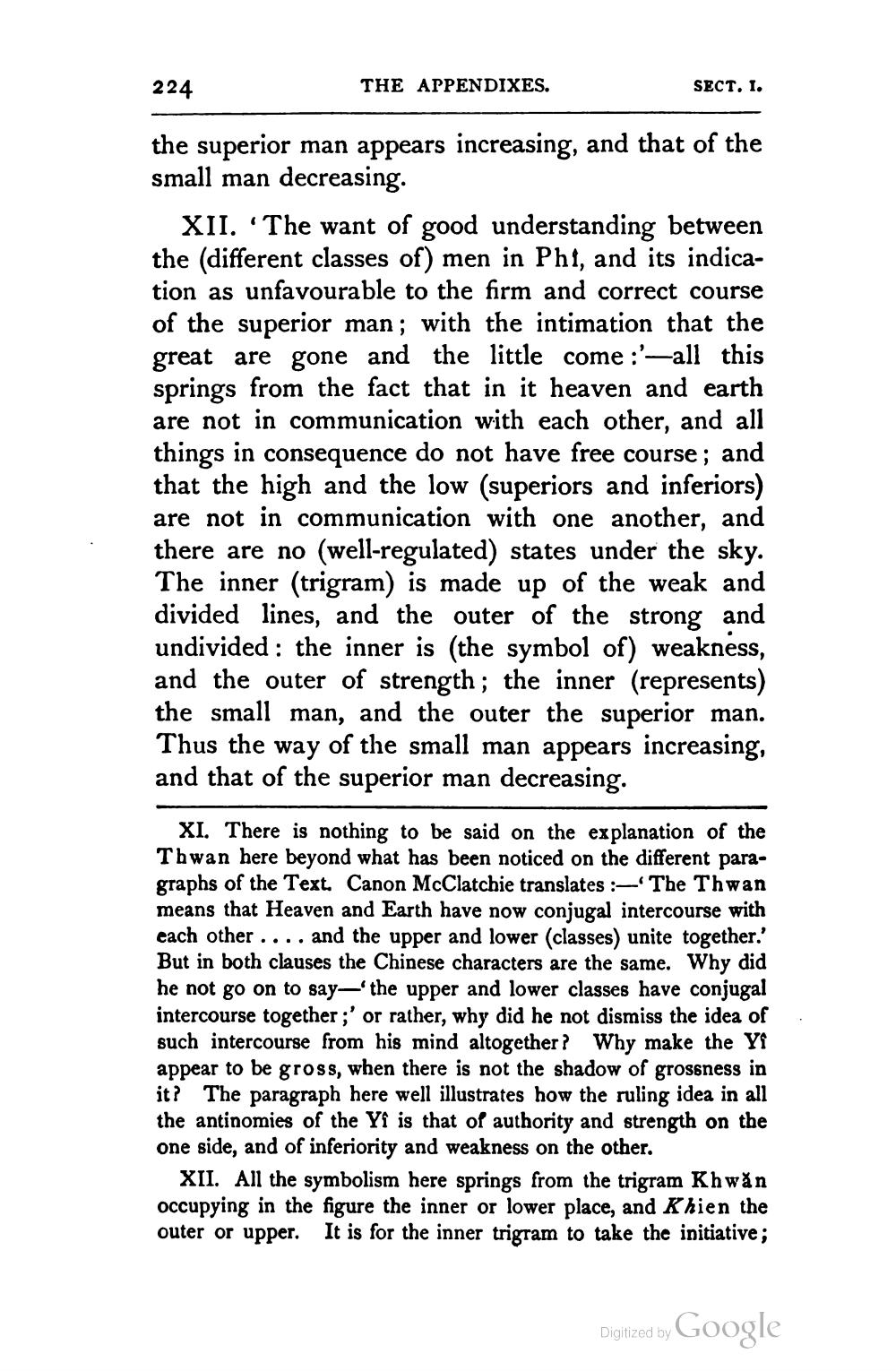________________
224
THE APPENDIXES.
SECT. I.
the superior man appears increasing, and that of the small man decreasing.
XII. The want of good understanding between the different classes of) men in Phi, and its indication as unfavourable to the firm and correct course of the superior man; with the intimation that the great are gone and the little come :'-all this springs from the fact that in it heaven and earth are not in communication with each other, and all things in consequence do not have free course; and that the high and the low (superiors and inferiors) are not in communication with one another, and there are no (well-regulated) states under the sky. The inner (trigram) is made up of the weak and divided lines, and the outer of the strong and undivided : the inner is (the symbol of) weakness, and the outer of strength; the inner (represents) the small man, and the outer the superior man. Thus the way of the small man appears increasing, and that of the superior man decreasing.
XI. There is nothing to be said on the explanation of the Thwan here beyond what has been noticed on the different paragraphs of the Text. Canon McClatchie translates — The Thwan means that Heaven and Earth have now conjugal intercourse with each other .... and the upper and lower (classes) unite together.' But in both clauses the Chinese characters are the same. Why did he not go on to say—the upper and lower classes have conjugal intercourse together;' or rather, why did he not dismiss the idea of such intercourse from his mind altogether? Why make the Yi appear to be gross, when there is not the shadow of grossness in it? The paragraph here well illustrates how the ruling idea in all the antinomies of the Yi is that of authority and strength on the one side, and of inferiority and weakness on the other.
XII. All the symbolism here springs from the trigram Khwăn occupying in the figure the inner or lower place, and Khien the outer or upper. It is for the inner trigram to take the initiative;
Digitized by Google




